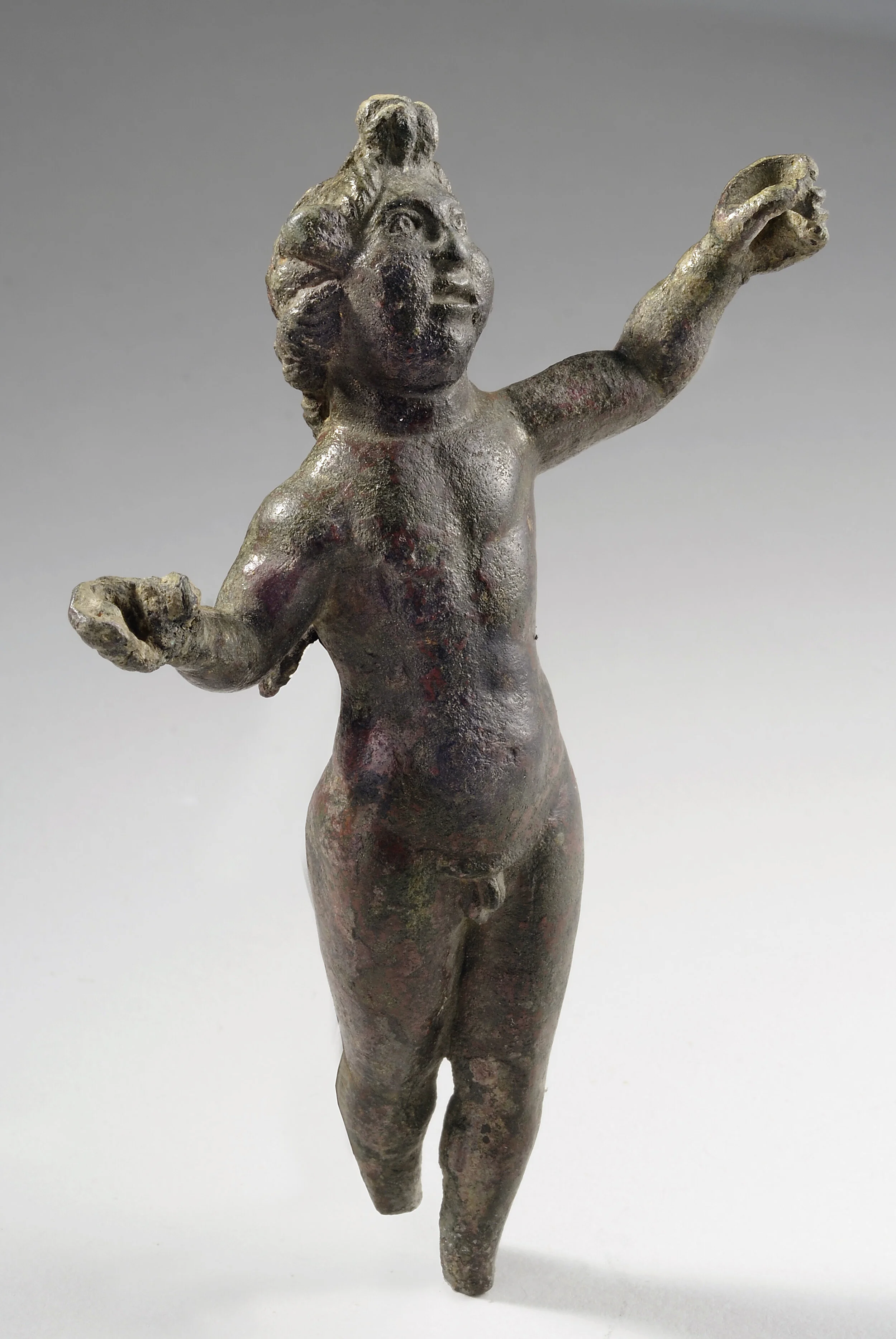Ancient Roman Marble Comedy Mask


Ancient Roman Marble Comedy Mask
Roman, 1st century A.D.
Marble, pigment
H: 11.0 cm (4.33 in)
PROVENANCE: Ex- European private collection; imported to the US, 1999.
Serial No: 10418
Theater masks were important thematic images often found on marble reliefs of the Hellenistic and Roman periods. They adorn monumental architectural slabs, sarcophagi, and votive reliefs, especially those dedicated by actors in the sanctuaries of their patron, Dionysos. Some represent an actor or playwright who is seated in front of a table with theatrical masks and also holding a mask. Two such marble reliefs, one in the Princeton University Art Museum, another in the Vatican Museums, depict Menander, a famous Greek poet and the New Comedy playwright.
There was a specific type among the Roman reliefs which is well testified by the archaeological finds in Pompeii and Herculaneum – the rectangular marble plaques called pinakes, sometimes with reliefs on both sides. They were placed on the narrow pillars and installed among the greenery and fountains in the garden of a villa or private house. Many depict the mask of Dionysos in the Archaistic style, with an ornated crown, long spiral hair locks and beard, masks of his companions, satyrs, sileni, maenads, and also various theatrical masks. The whole space in the composition is given to the images; the background represents a rocky landscape in a rather conventional way.
The present mask depicts an old man with the furrowed cheeks, low bulging forehead, prominent nostrils of broad, flat nose, and beard. The exaggerated aperture for the mouth of the mask (the so-called megaphone mask) makes all features look distorted. In Greek and Roman theater the mask was an important part of the actor’s costume as it represented the character. The type of this mask could be related to the New Comedy personage such as an old man or slave, most probably, the Wavy Hair Leading Slave.
The execution of this marble relief demonstrates the ultimate skills of a Roman sculptor. Deep carvings of the eyes, nostrils and mouth create a strong chiaroscuro effect, which was emphasized by the color painting (remains of purple pigment are visible inside the mouth and on the beard). The high precision in detailing of the shapes supplies this marble carving with a quality of a precious cameo. A similar mask of the Roman Imperial date is found in the Roman Museum in Avenches, Switzerland.
CONDITION
Remains of purple pigment inside the open mouth and on the beard; surface covered with encrustation; soil deposits inside the eyes and nostrils; a few cracks.
BIBLIOGRAPHY
BIEBER M., The History of the Greek and Roman Theater, Princeton, 1971, pp. 155-156.
Rediscovering Pompeii, exhibition catalogue, Rome, 1990, pp. 250-254, no. 175.
RIDGWAY B. S. et al., Greek Sculpture in the Art Museum, Princeton University: Greek Originals, Roman Copies and Variants, Princeton, 1994, pp. 100-106, no.32.
WEBSTER T.B.L., Monuments Illustrating New Comedy 1, London, 1995, p. 58, no. 6 XI 3.







